Thousands of curious tourists and locals queued up in Sydney to catch a whiff of a rare plant known as a corpse flower after it bloomed for the first time in a decade.
The specimen, nicknamed Putricia – a combination of ‘putrid’ and ‘Patricia’ – is famous for emitting an odour likened to rotting flesh.
Putricia bloomed in Sydney last Friday for the first time in 10 years, causing people across the city to flock to the Royal Botanic Garden to snap a selfie and grab a sniff.
The bizarre plant typically does not bloom more than once every few years and it lasts only about a day. A specimen has not bloomed in Sydney since 2010.
As the long-awaited unfurling of Putricia’s petals began on Thursday afternoon, queues lengthened and visitors waited as long as three hours.
The garden stayed open until midnight on Thursday to accommodate the large crowds.
‘The fact that it’s so huge, it takes so long [to bloom], and it smells so foul really attracts people to it,’ Sydney Botanic Gardens chief scientist Brett Summerell said.
‘I liken the smell to a dead possum,’ he said.
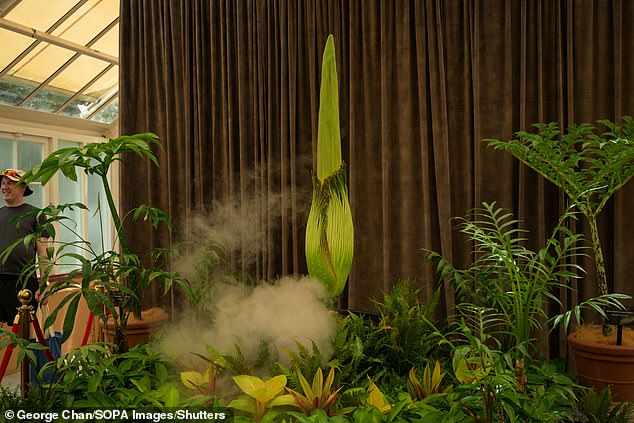

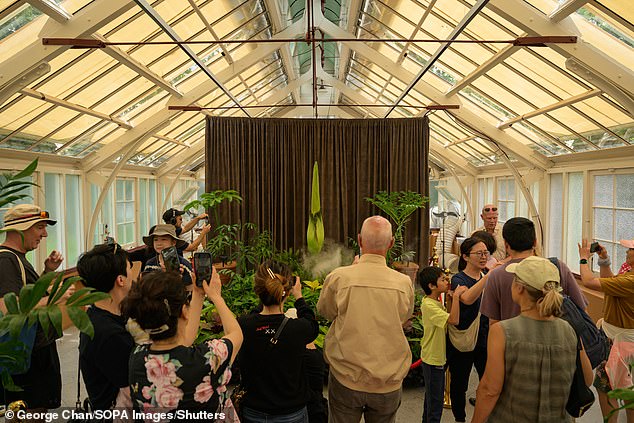
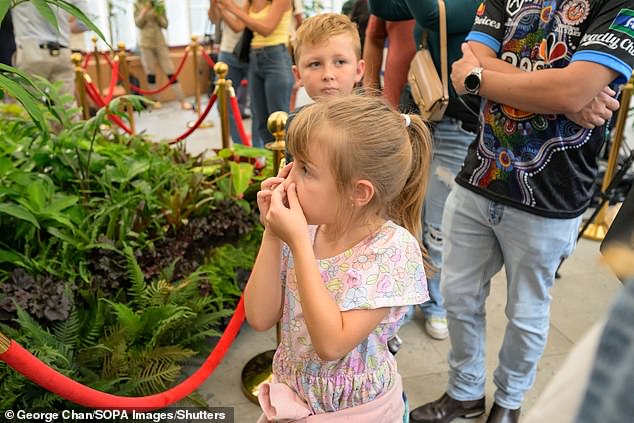
Sydney resident Rebecca McGee-Collett, who waited 90 minutes to see the flower on Thursday evening, said the flower was beautiful but the smell was ‘like hot garbage’.
John Siemon, director of horticulture and living collections at the gardens, compared the spectacle to Sydney’s 2000 Olympics, saying ‘we’ve had 15,000 people come through the gates before it [the flower] even opened’.
A live stream of the plant accumulated close to one million hits as food trucks selling gelato and cold beverages lined the streets outside and volunteers handed flyers to excited visitors.
Every few minutes, 25 people were let in to the building to have their allocated time with Putricia as the pungent smell strengthened by the hour.
Once indoors, fans were greeted with the sounds of soft, classical music, a red carpet and velvet rope.
Images from within the botanical garden show the plant standing tall and proud as little puffs of mist emanated from beneath her – designed to replicate the humidity of Indonesia, where the species is found in the wild.
The corpse flower’s scientific name is amorphophallus titanum – which translates to large, deformed penis – due to its phallic tip.
The oversize flower features fluted crimson petals and can measure more than three feet across with a pointed centre stalk that can top 10 feet.

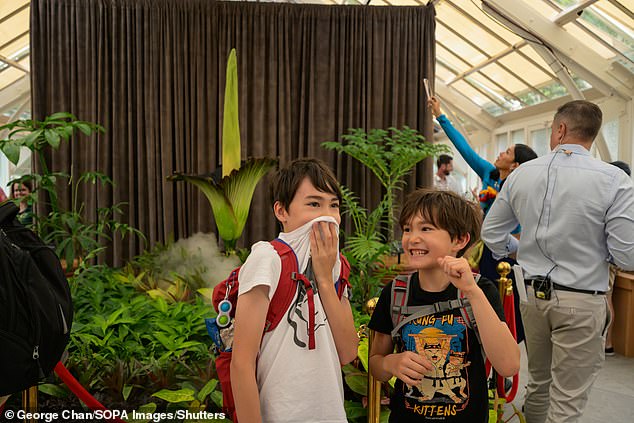
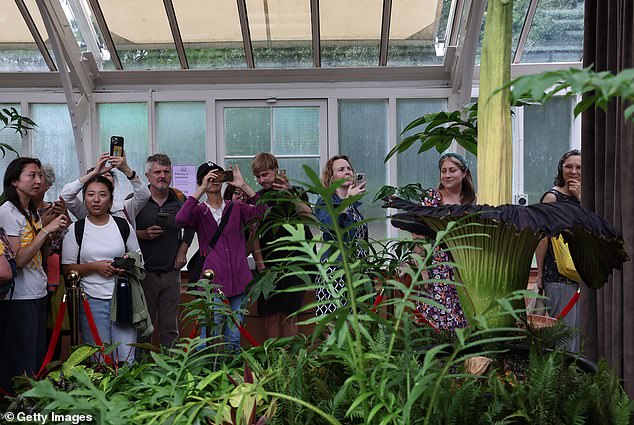
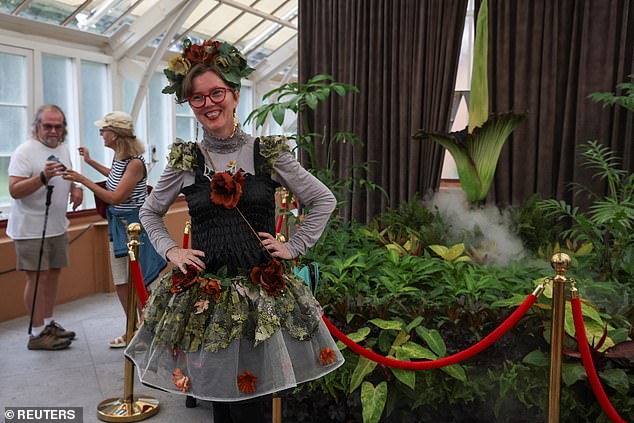

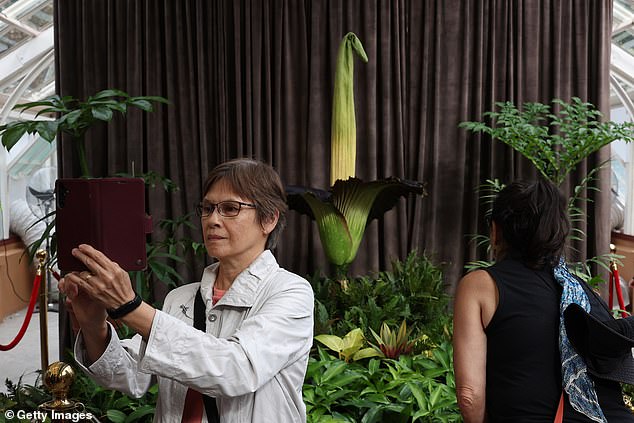
Speaking to The Guardian, Chief scientist at the Royal Botanic Garden, Prof Brett Summerell, said he had only ever witnessed a corpse flower bloom five times during his 35 years in the job.
‘Something that occurs this rarely is always a special occasion,’ he said.
‘You come out and everything stinks, I’ve heard stories of people if they’re very sensitive gagging … it’s never affected me that badly, but each to their own,’ he added.
In a few days, Putricia will shrivel up and collapse and eventually a new single leaf will be produced. But it may be years until she has the energy to flower again.
When in bloom, the plant’s long yellow spadix emits a strong odour, often compared to the smell of decaying flesh, to trick pollinators into landing on what they think is rotten meat so they can move pollen between male and female specimens.
It is endangered in the wild due to deforestation and land degradation.

